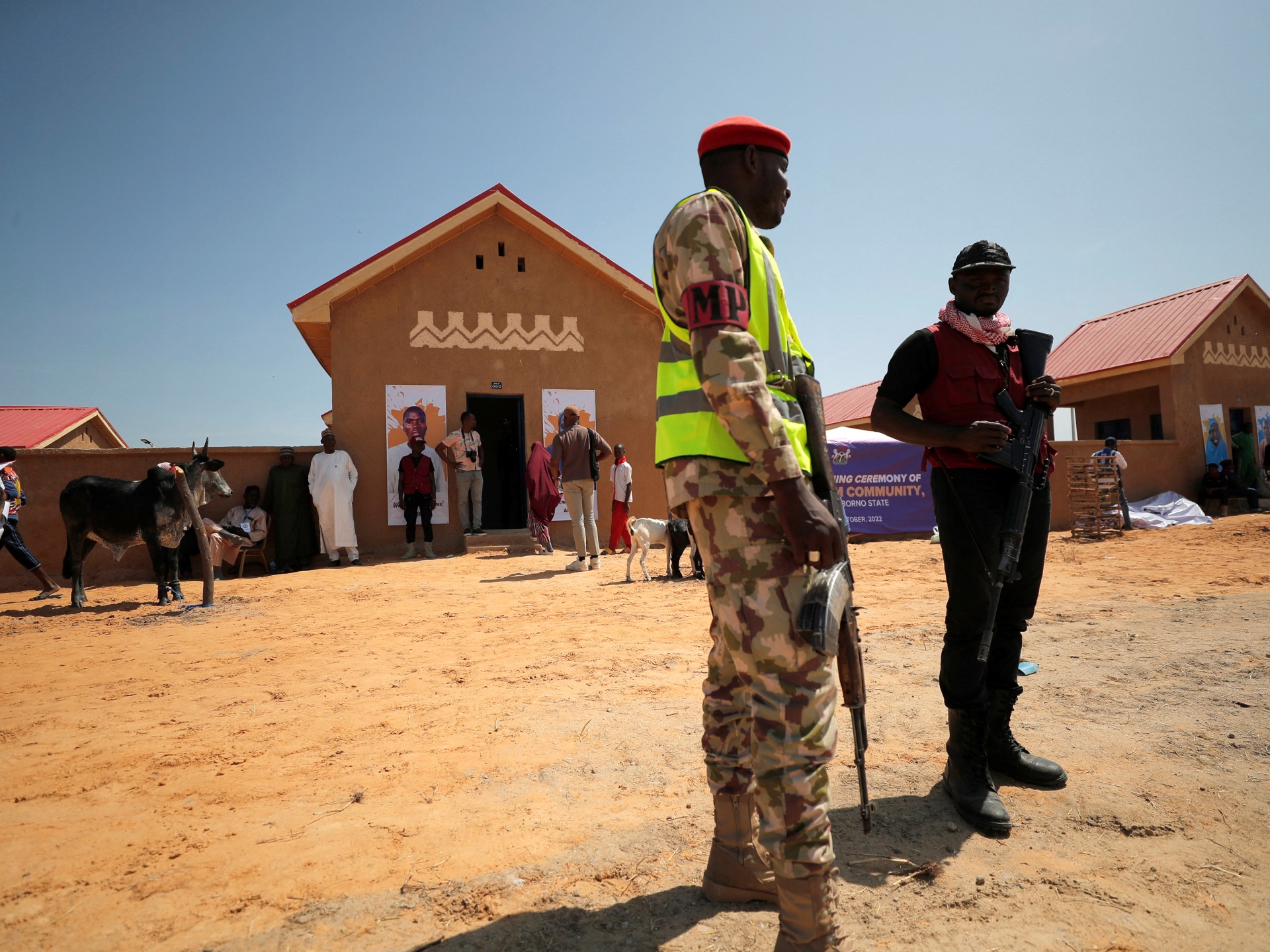It was a typically hot day in northeastern Nigeria’s Borno state. Temperatures soared past 40 degrees Celsius (104 Fahrenheit) as I sat in a makeshift tent in the town of Ngarannam in October last year.
The occasion was special: As many as 3,000 people were returning to their town after living for seven years in Internally Displaced Person (IDP) camps in Maiduguri, 50km (31 miles) away. They had fled their town as it was razed to ashes by the Boko Haram armed group.
Among them was Dana Adam, a widower who lost her husband to a cholera outbreak in the IDP camp and who is now the sole provider for her three children.
Adam is one of millions for whom the conflict has had a catastrophic impact. But there is now some hope. Like the others, she now has a new home in a rebuilt community that has a school and police station, market stalls, solar-powered streetlights and water boreholes commissioned by the Borno state government, the United Nations Development Programme (UNDP) and partners as part of a joint initiative to rebuild the Lake Chad Region.
For thousands including Adam and her children, it is a chance at a beginning, an opportunity to reclaim what was taken from them: their memories, a sense of belonging and their dignity.
Yet as I took the stage to give the welcome address, I found myself overwhelmed with mixed emotions. One of satisfaction over what we have achieved together but also my own reawakened memories of loss and incompleteness.
I was forced to leave my maternal home in Somalia when I was just three years old. Political repression in early 1980s Somalia forced my family to flee and move more than 300 miles (483km) away to the Kenyan coastal town of Malindi.
While I have little recollection of the events or circumstances that brought us to Kenya, I do know that they are the same ones that would later morph into the full-blown conflict and political instability that persists to this day. It deprives me and millions of other Somalis of the opportunity for renewal and reconnection with a long and fractured relationship with home.
Ngarannam shows that an alternative, brighter future is possible for those displaced by violence like my family once was.
It is a prototype community and one of eight areas we are developing through the Regional Stabilization Facility in the Lake Chad region across the four conflict-affected countries of Nigeria, Niger, Chad and Cameroon. The idea is not just to restore the destroyed buildings and infrastructure, but to create a sense of pride and belonging, dignity and independence.
Being involved in a project that allows communities to start healing the psychological scars of displacement has been a sort of catharsis for me.
In designing and reconstructing Ngarannam, we were keen to ensure the community played a key role in how their destroyed town was to be rebuilt. A team of Nigerian creatives led by the female Nigerian architect, Tosin Oshinowo, was brought on board.
They ensured that the ideas and needs of Adam and other returnees like her were central to the design. Because to return home after fleeing violence and destruction, one needs more than rebuilt physical infrastructure. A sense of security and fresh ways to make a living are critical, too.
For the families returning to Ngarannam, it meant the challenging and overwhelming process of starting from scratch. So the town’s revival roadmap has also focused on helping families build sustainable sources of income. That includes resources like grants and training to start businesses; the construction of shops for traders; and cattle for herders. The idea: To help the community, including women, not only restart their lives but to do so with pride.
Rediscovering self-reliance after years of receiving handouts in IDP camps was never going to be easy. But, despite these challenges, many in Ngarannam have now successfully made the transition. Determination is winning out over the fear of starting over. Adam and women like her were delighted to return home and get their life and livelihood back.
“Now we are back to our village and living in peace,” Adam said, “that alone is an achievement to me”.
As the UN collectively continues to support and find sustainable solutions for displaced people, we are guided by the UN Secretary-General’s action agenda on internal displacement. This reminds us all of our collective obligation to support displaced people’s return to their places of origin voluntarily and with dignity.
Welcoming the people of Ngarannam to their homes brought me an immense sense of pride. It is my hope that one day I, too, can walk freely around my place of birth with the joy and promise I saw in the eyes of the people of Ngarannam.
The views expressed in this article are the author’s own and do not necessarily reflect Al Jazeera’s editorial stance.
